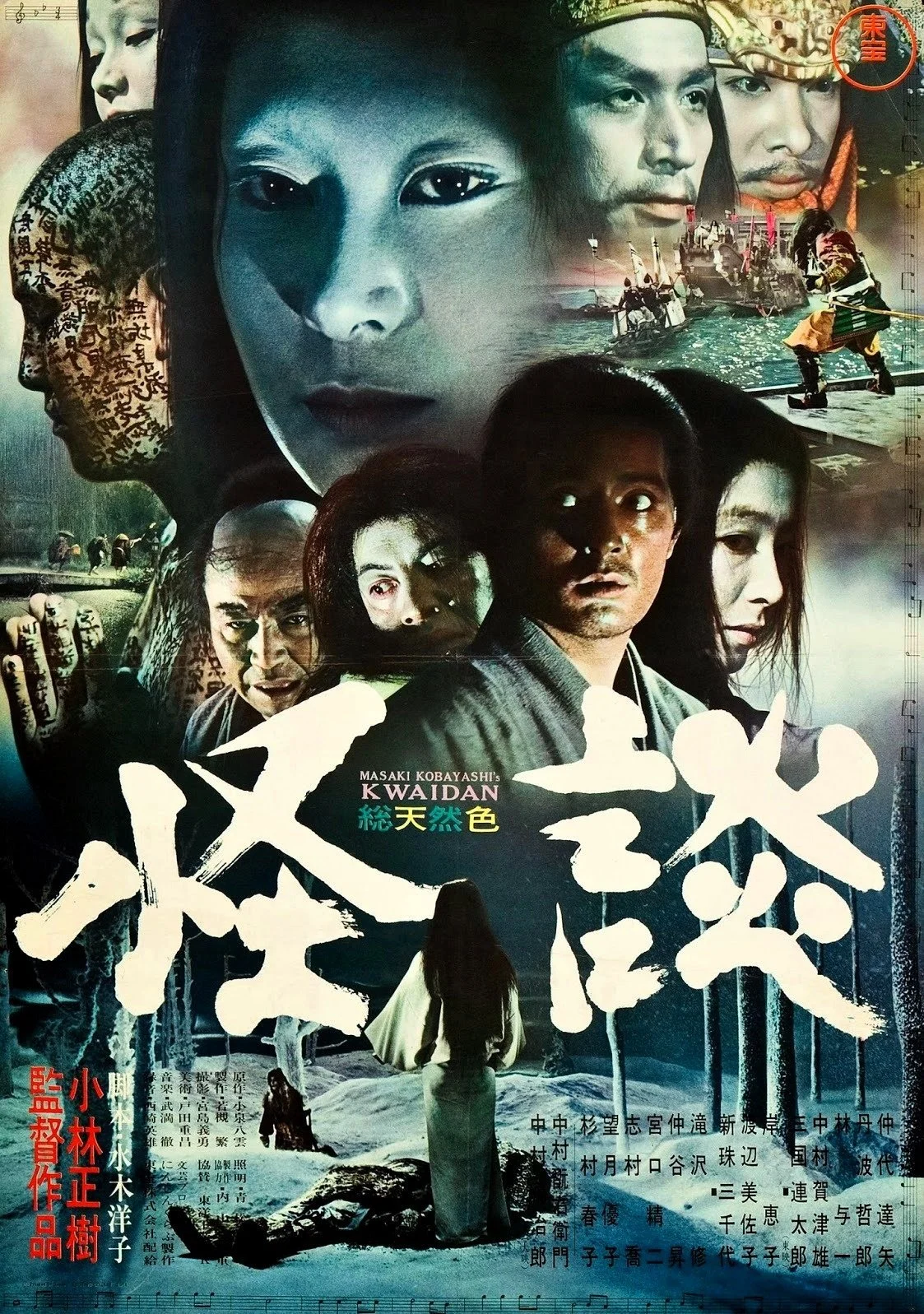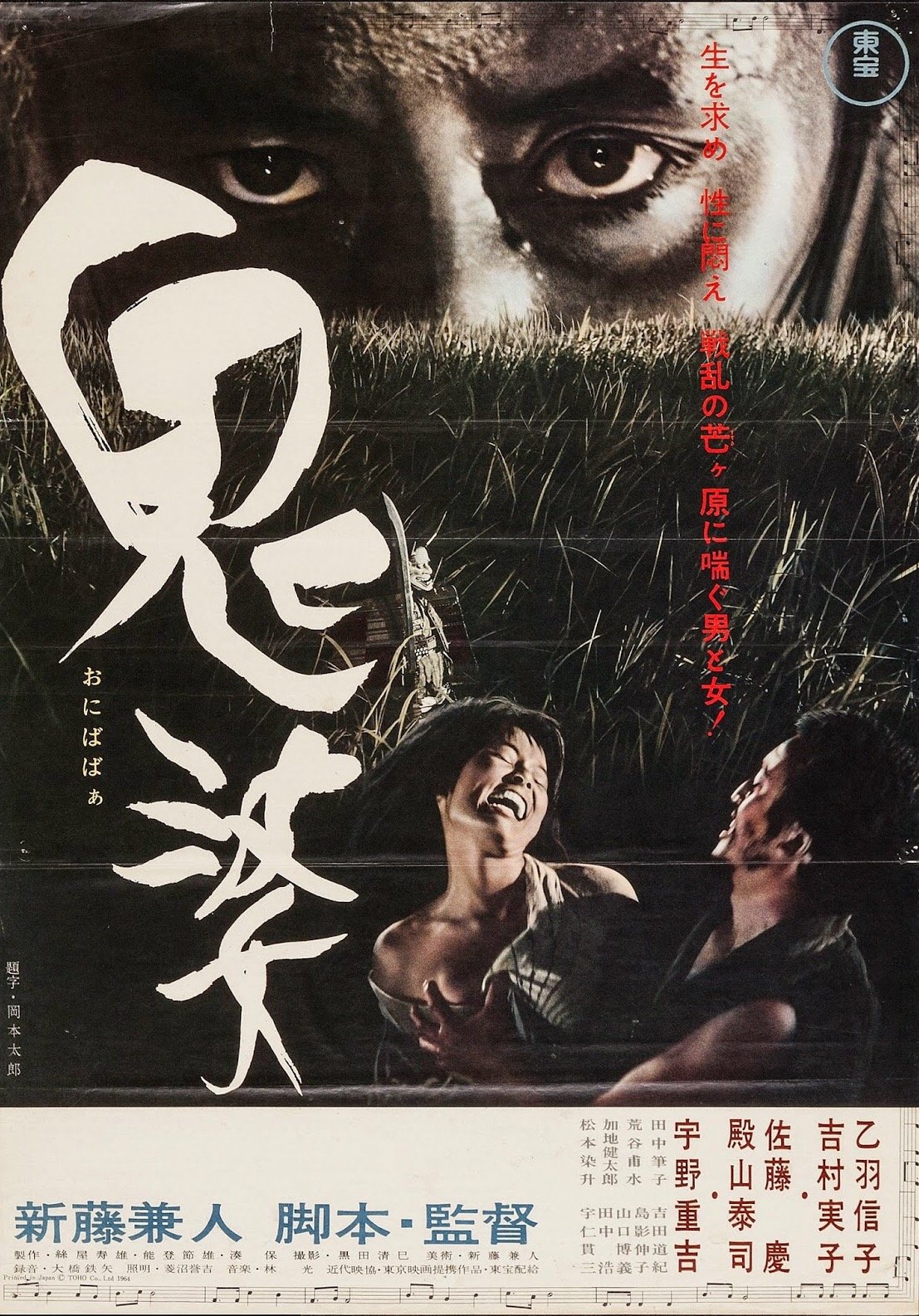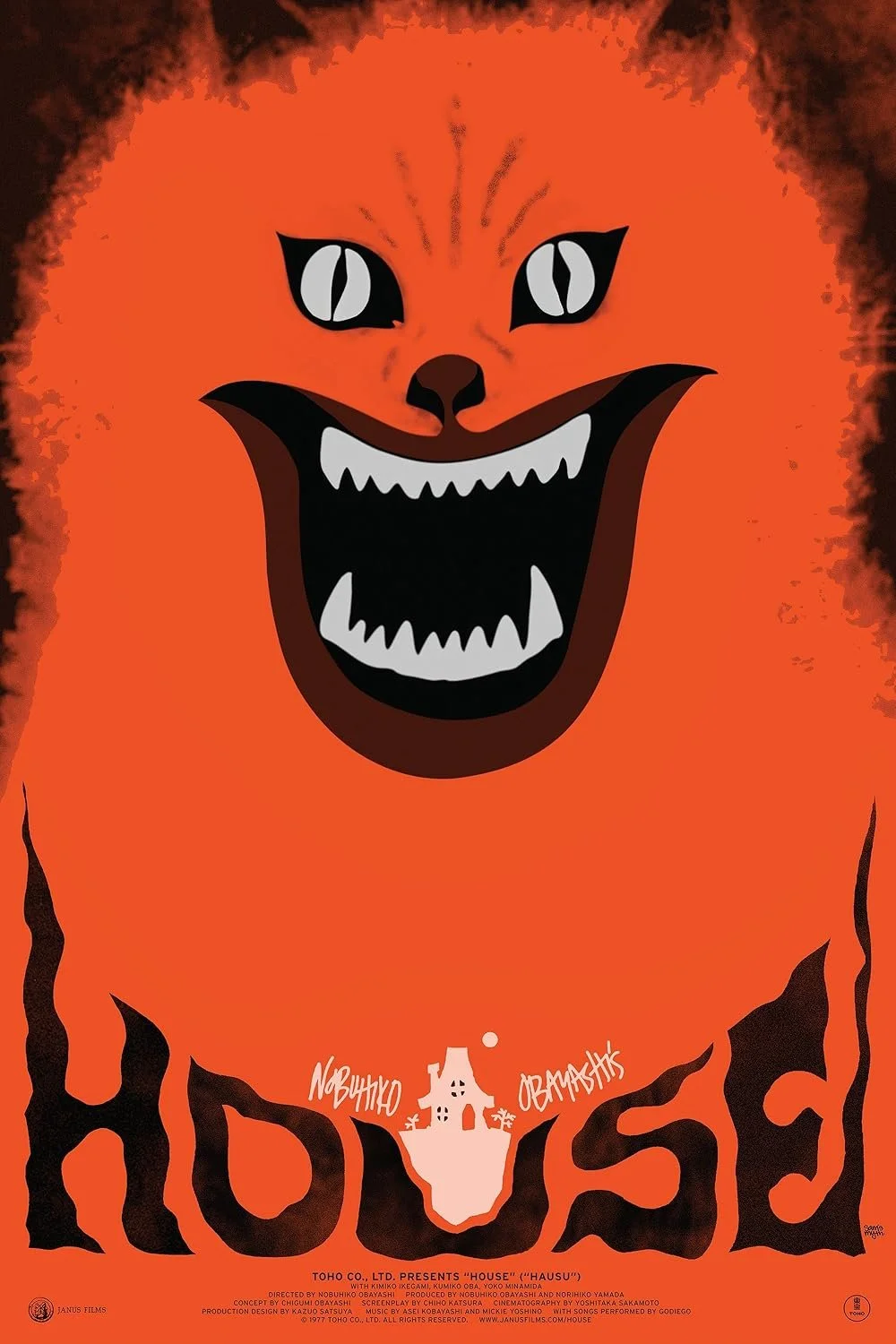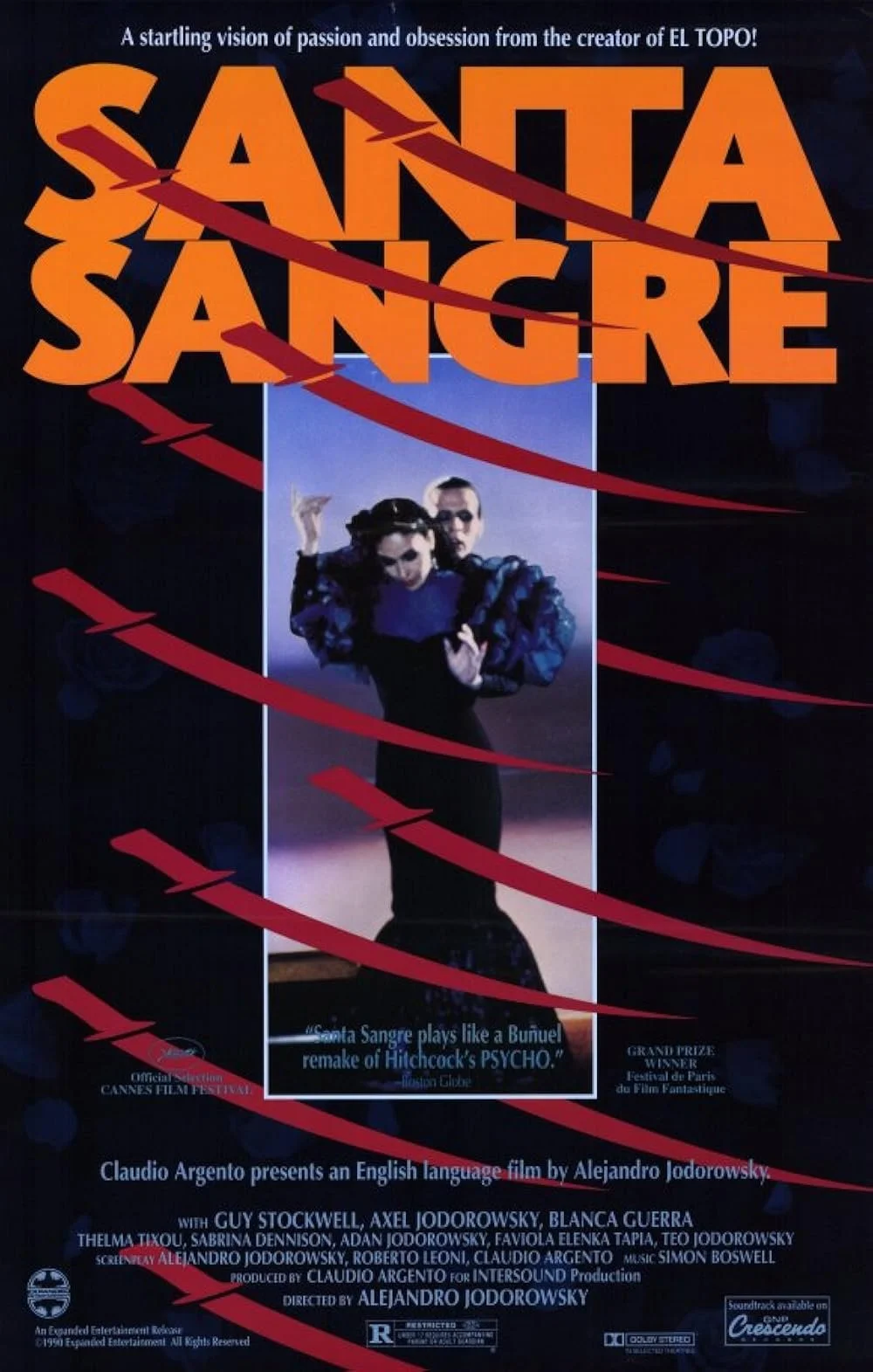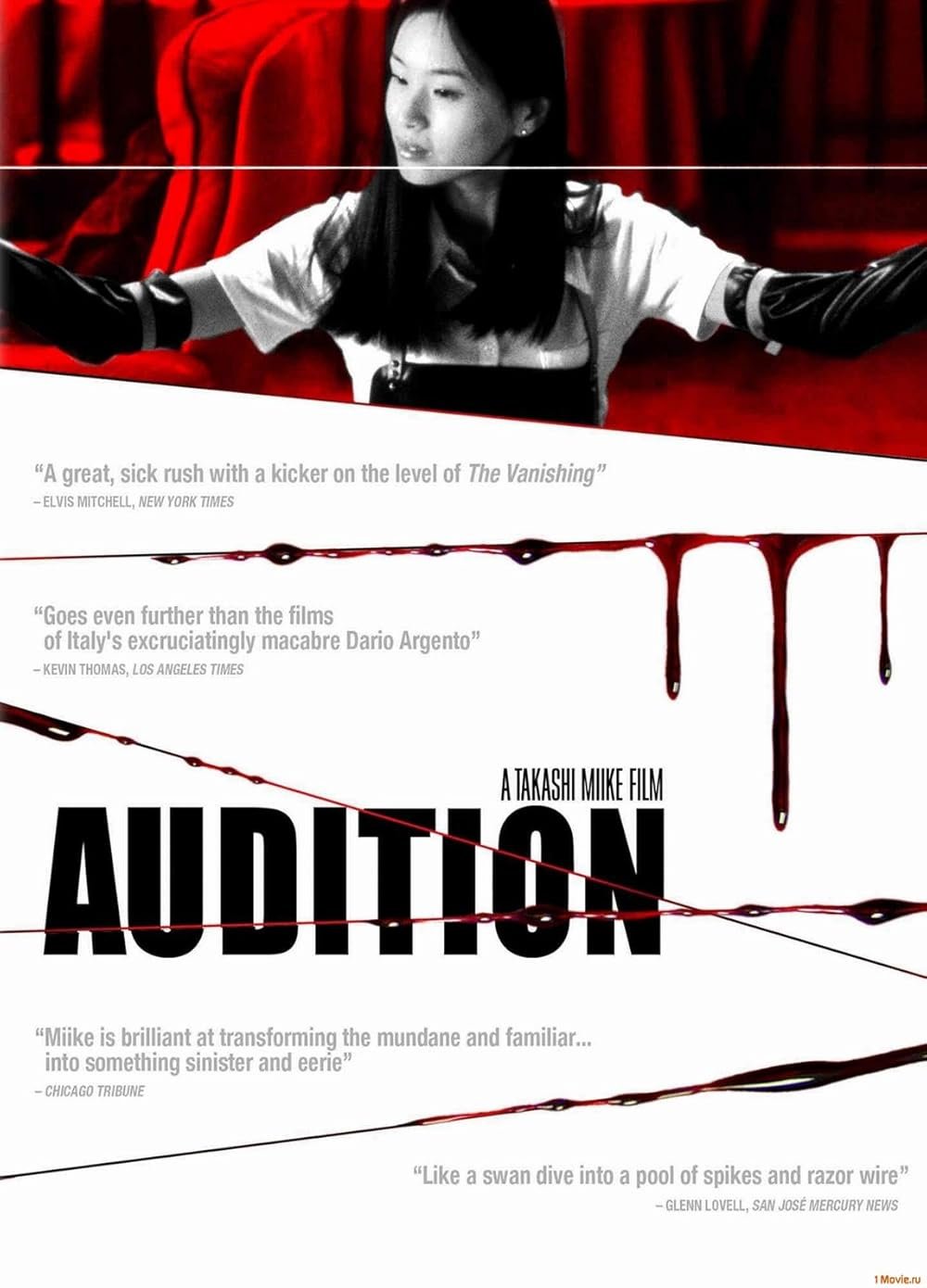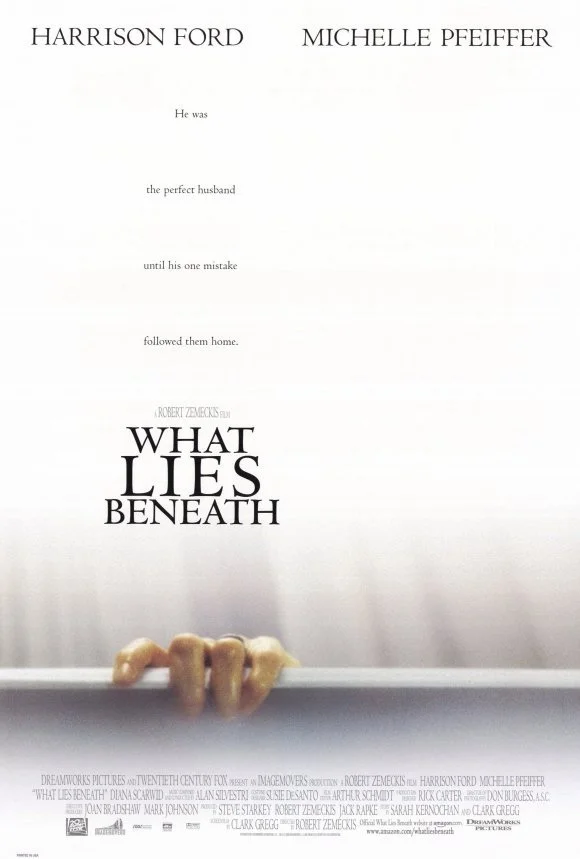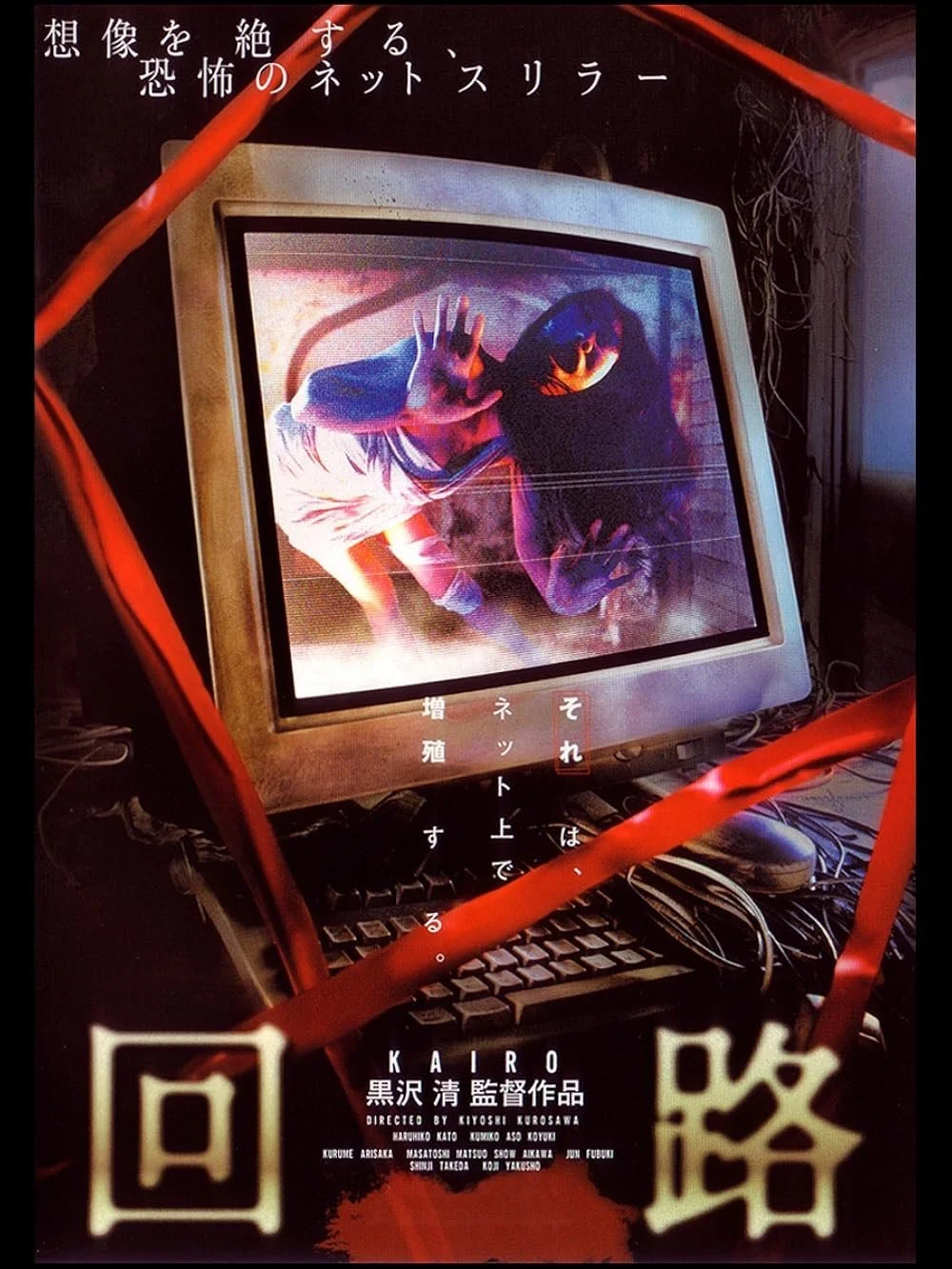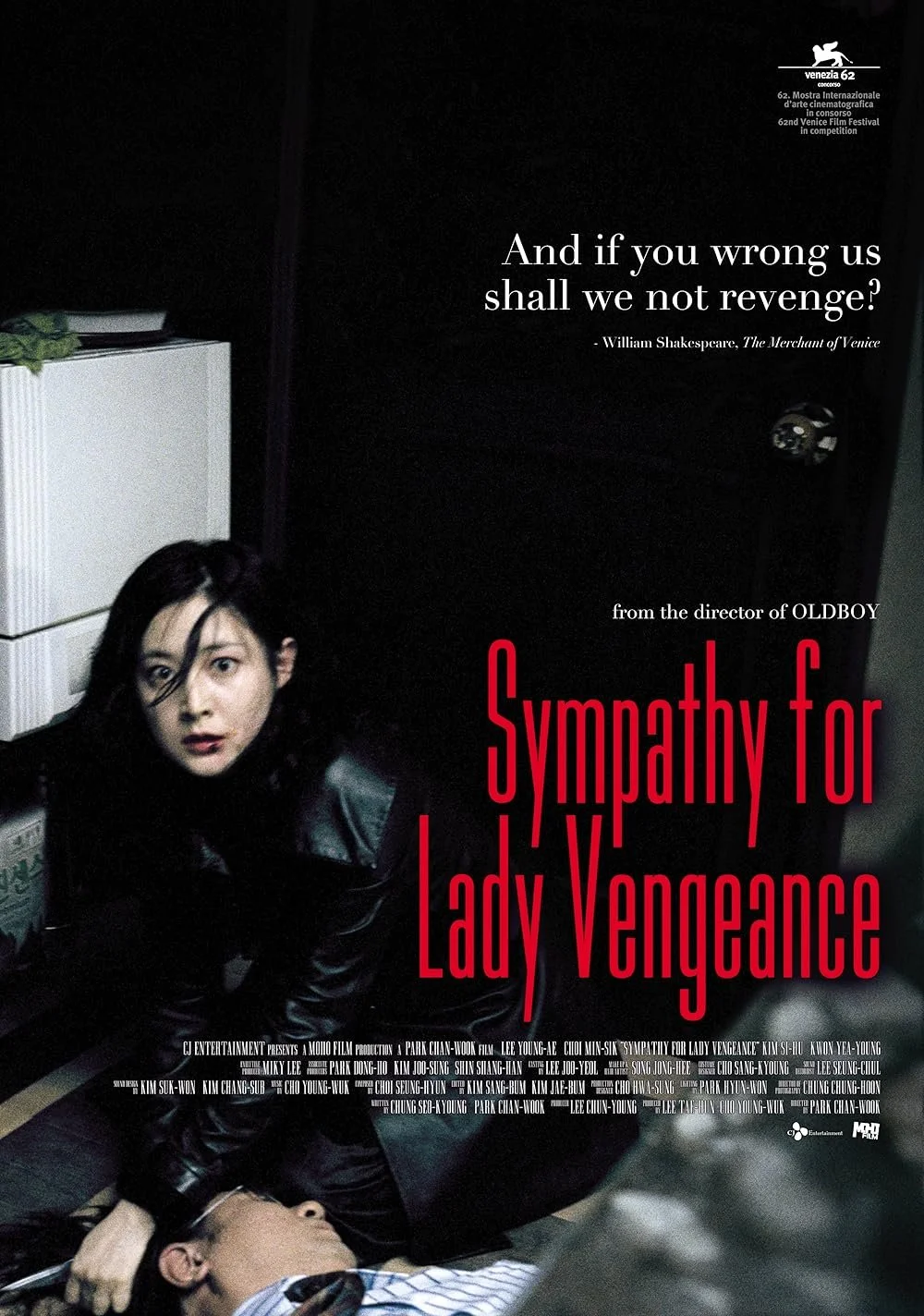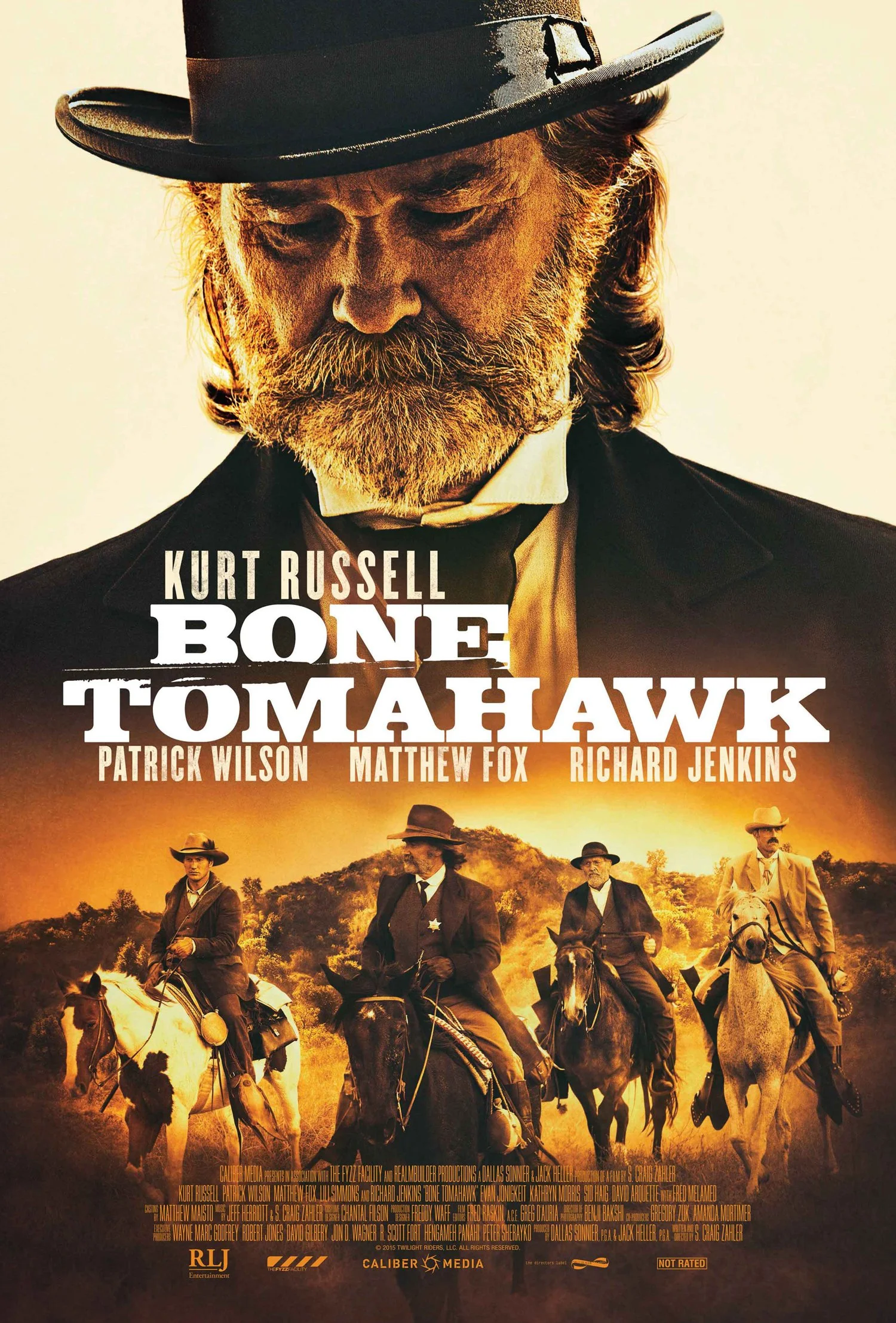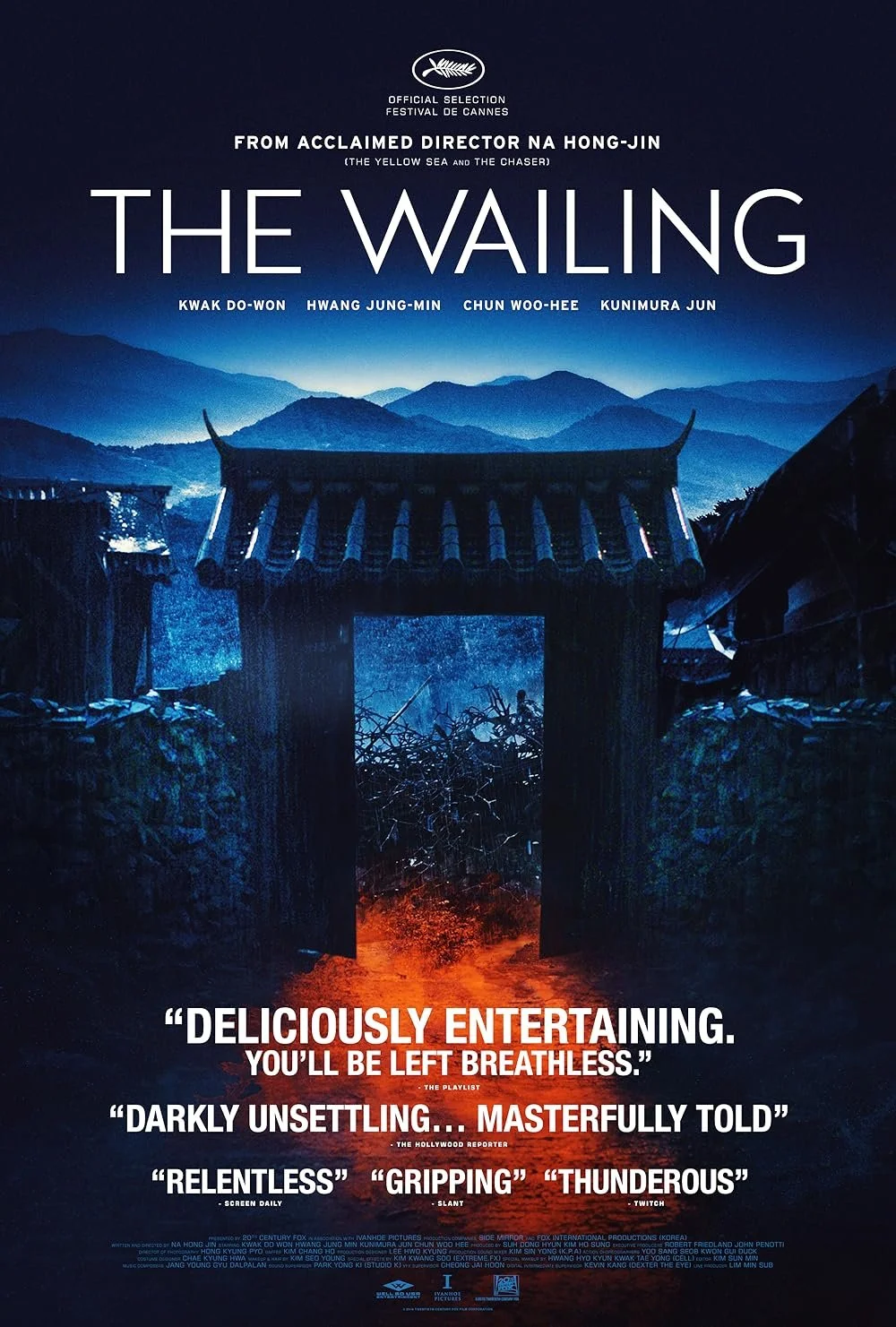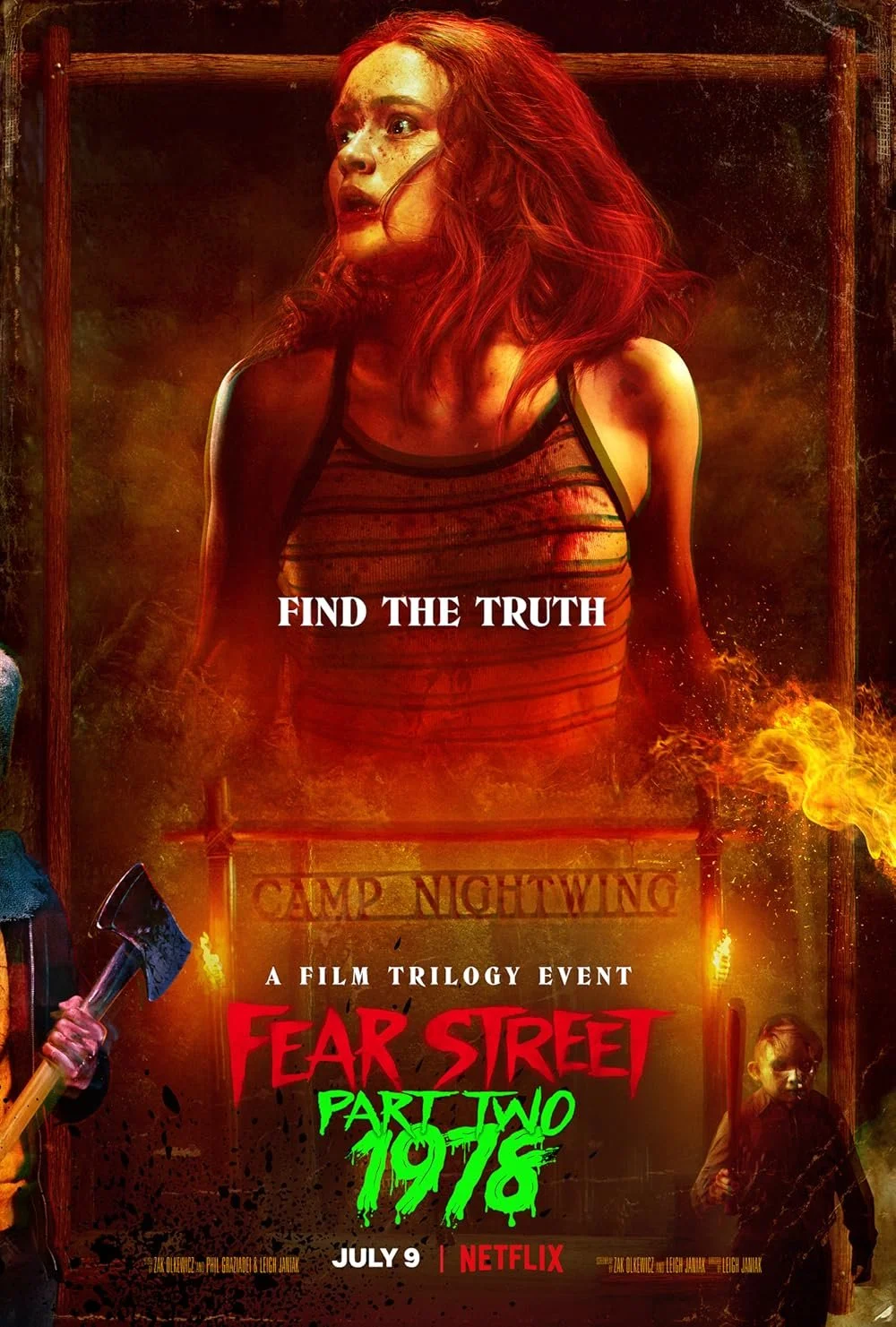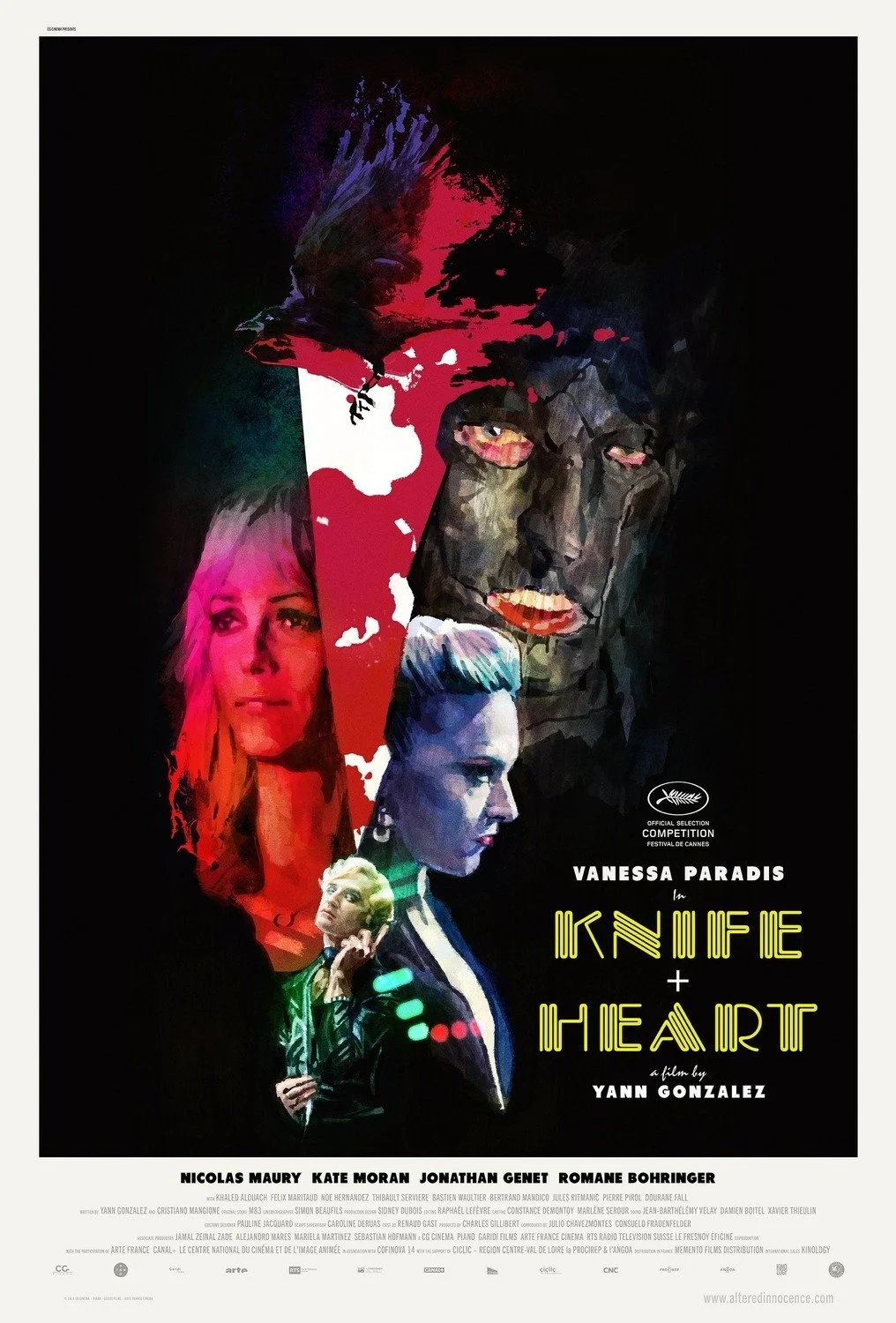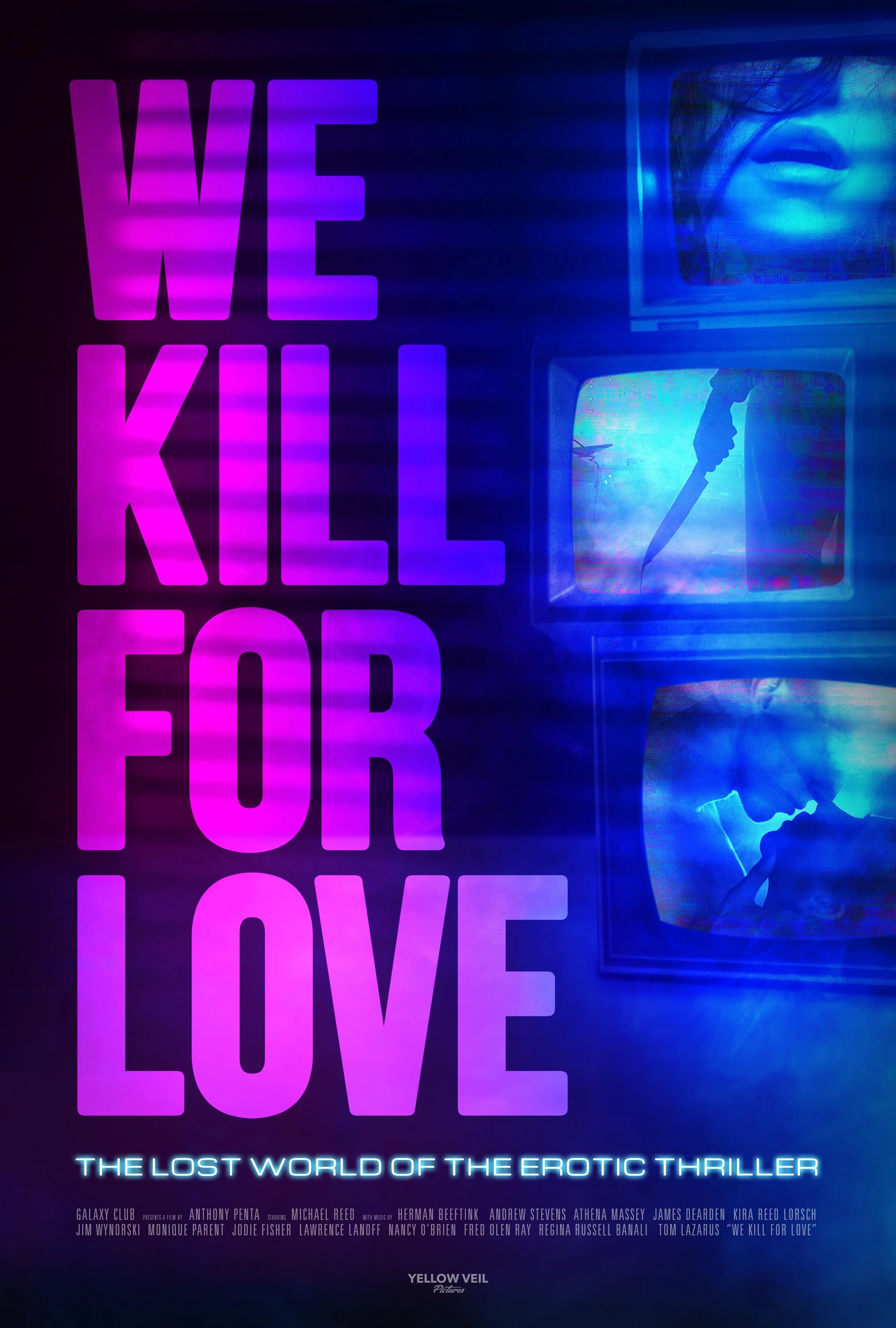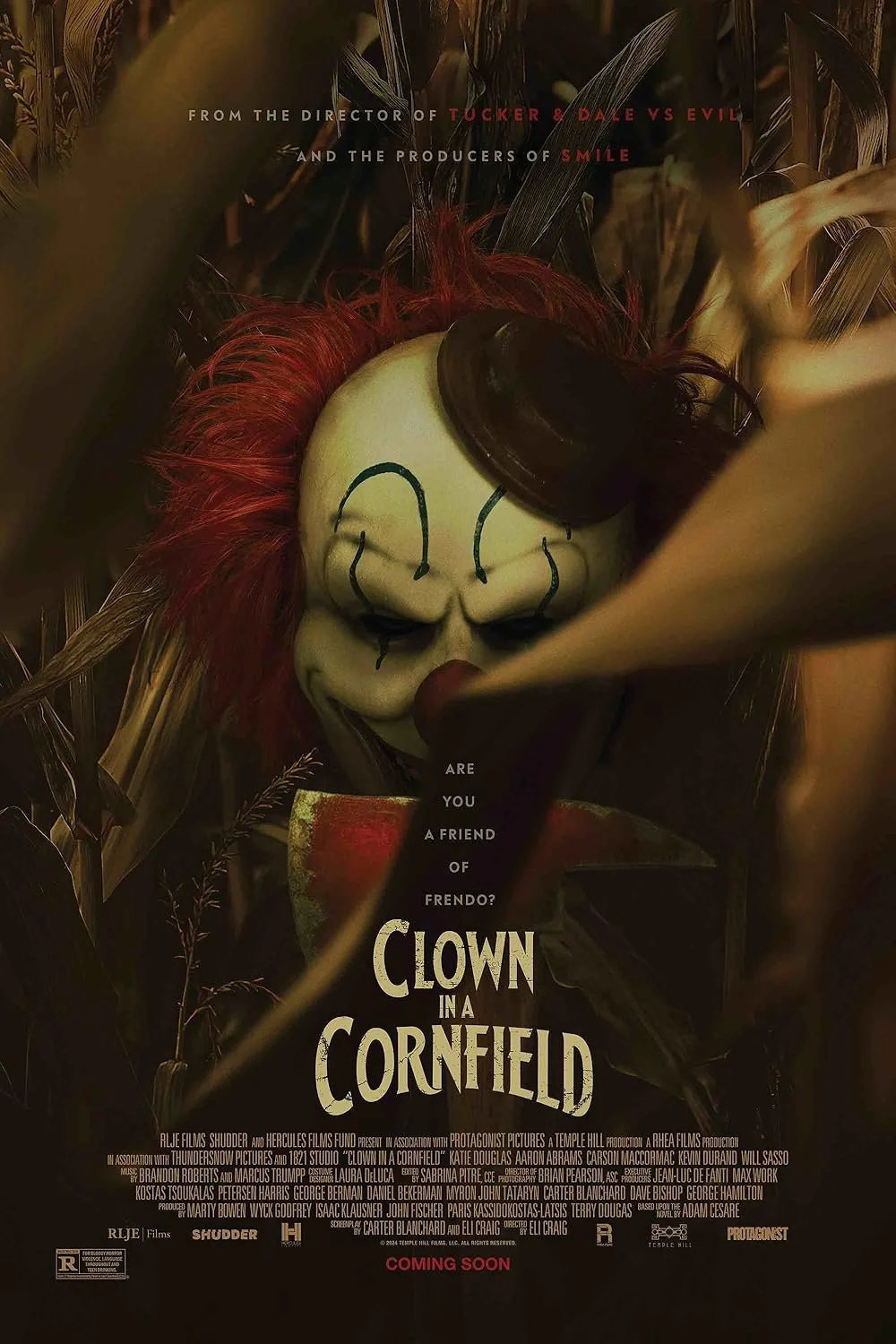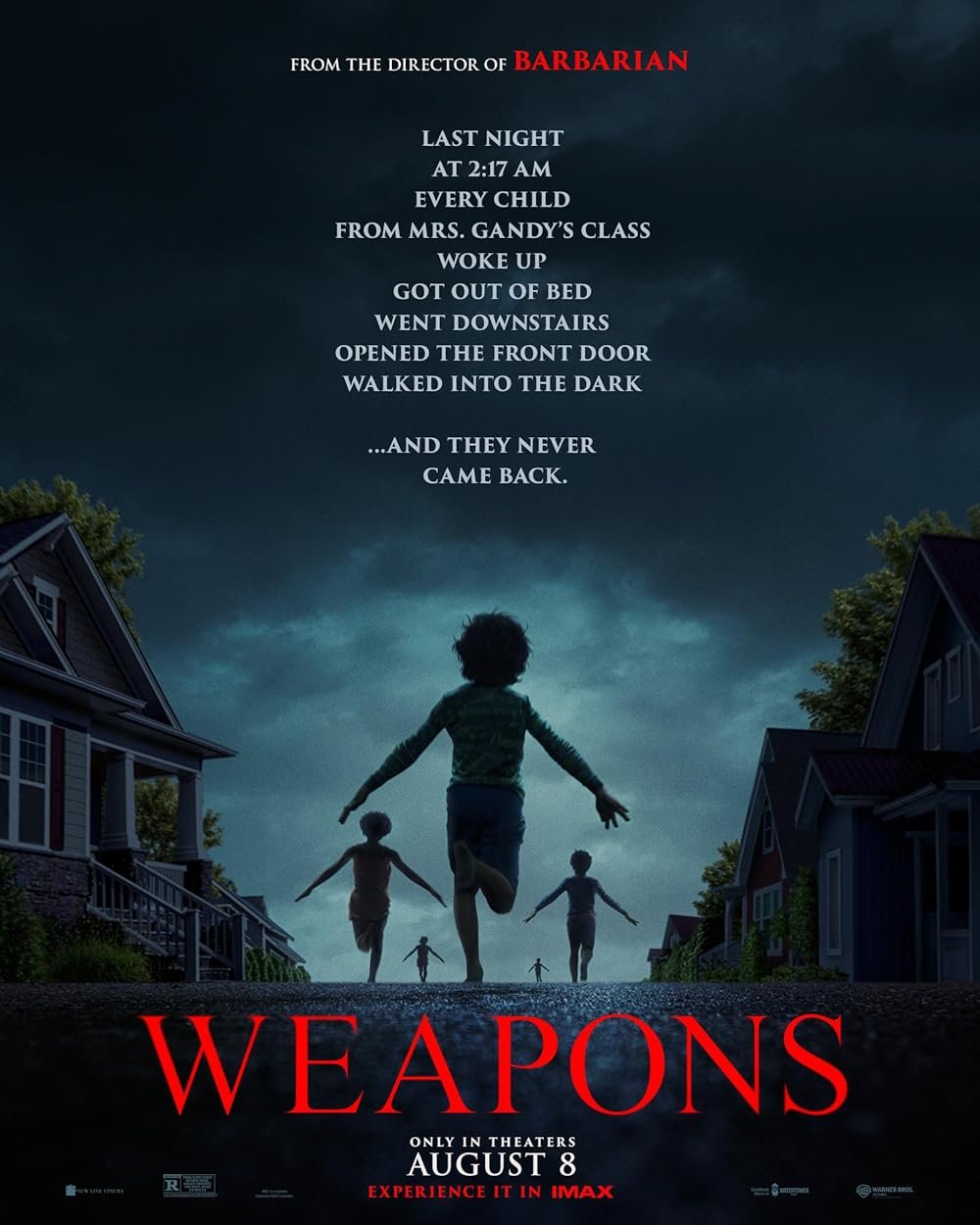31 Days of Halloween 2025
At The WODC, we think one of the keystones to being a creative is immersing yourself in the creative works of others. And, being screenwriters ourselves, any opportunity we get to watch movies for “research” is a welcomed reprieve from staring at our own pages.
This year, we’ve decided to add to our growing catalogue of annual screening lists and bring you, The WODC’s 31 Days of Halloween. This inaugural list was curated by Co-Founders Mercedes Khali and Deanna Gomez, and celebrates the vast range of the horror genre during the spookiest time of year. Take a journey with us into the realm of the strange and unusual, find your next favorite scare, and sleep with the lights on whenever you see fit. This is a judgement free zone (for the viewers, at least). If you’re not sure where to start, read our hot takes to see what films suit you.
Most of all, enjoy your tricks and treats this spooky season and beyond, because at The WODC everyday is Halloween.
The Cabinet or Dr. Caligari (1920)
A young man recounts a series of heinous murders that occurred in his hometown, slowly uncovering his own twisted reality in the process.
The Cabinet of Dr. Caligari (1920) is a trailblazing film for the psychological thriller genre and is what I consider essential viewing based on the incredible film preservation effort alone. What shines in particular is the set design, incorporating slanted angles and unique illustrations to create an unhinged feeling to the setting. The use of dark contouring around the faces and eyes of the characters helped to add depth to their expressions, leaning less on the typical overexaggerated movement you might expect from a silent film.
The art of silent film has receded over time because of the ease of clarity with “talkies”, but I think this film is a testament to the amount of terror that can be evoked without sound. By leaning into the emotion of the performers and the solemn melody of the score, the audience is invited into the dark world of Dr. Caligari and his eerie freakshow. My favorite element of the film is the invitation to determine for ourselves if the narrator is reliable or not. Because his narrative is the only one we’ll follow, it’s easy to want to believe him outright, but the fantastical nature of his origin story and the inconsistencies throughout lead us to wonder what’s real and what’s embellished.
For those interested in reveling in the origins of film history and tumbling down a rabbit hole in the process, this film is for you.
- Mercedes Khali
Cat People (1942)
When a young woman finds herself falling in love, she is forced to face a haunting legend from her homeland to determine just how deadly her devotion might be to her new lover.
Jacques Tourneur’s Cat People (1942) is a celebration of the true depth of light, dark, and shadow in black and white film. From one sequence to the next, there is brilliance unfolding onscreen as characters emerge from inky black voids and shadows cast over their faces, forcing us to question if what we see matches what we know to be true (or at least what we think we know). The story itself is cozy and quaint with a tinge of mysticism, lending itself well to the noir style of lighting and cinematography. While I wouldn’t consider it the scariest screening on this list, it is certainly worth the watch for the quality of visuals alone.
I found the approach to the primary love story particularly compelling, where we see the qualities of chastity and naivety championed until they become unbearable to the male romantic interest. The love story itself seems to move quickly, erring more on the side of an infatuation of our male lead with a foreign creature, only to find that what was once innocent and unintimidating before has the ability to become deadly when provoked. Simone Simon is almost unsettlingly sweet as Irena Dubrovna, which makes her perceived evolution over the course of the film all the more anxiety-inducing.
For those seeking a strange and beautiful screening on a lonely night in this spooky season, sit back, relax, and marvel at this underrated masterpiece.
- Mercedes Khali
Black Sunday (aka The Mask of Satan) (1960)
Decades after being executed for witchcraft, vengeful Princess Asa Vajda and her fiendish servant are resurrected and begin a bloody campaign to possess the body of Asa Vajda's beautiful look-alike descendant Princess Katia.
Mario Bava’s Black Sunday is a gothic horror film all horror lovers will appreciate. Barbara Steele plays the two titular characters Princess Asa Vajda and Katia Vajda. Princess Asa is declared a witch and brutally put to death by her own brother. Upon her death, she curses her brother's heirs and promises to exact her revenge on them. The execution scene is one of my favorites. There is an added level of pain and horror outside of the traditional witch burning, and it leaves the audience flinching.
Throughout the following generations the curse takes its toll but thanks to two travelling doctors disturbing Asa’s tomb, she is resurrected. However, in order to fully return to Earth she must steal the life essence of her descendant Katia, who is Asa’s spitting image. Steele plays both characters with clear distinction. She is a fearless spitfire as Asa and a gentle, poised young woman as Katia.
The film is based on the short story Viy by Nikolai Gogol, and boasts gorgeous black and white cinematography with grand set pieces like Katia’s tomb. The make up and SFX are also very well done and it’s always nice to see practicals in action. Highly recommend a watch even if Gothic Horror isn’t usually their favorite, all fans can appreciate Bava’s work.
- Deanna Gomez
Kwaidan (1964)
An anthology of four tales explores the lasting impressions of spectral visitors to unsuspecting human hosts.
This film is an absolute spectacle and testament to the creative capacity of traditional studio-style productions. I would consider Kwaidan (1964) a champion of the soundstage era of filmmaking and required viewing based on the artistry of set design alone. The tales feel like ancient Japanese folklore unfolding onscreen. The repercussions of a haunting encounter may not have always made sense, but they were compelling nonetheless.
My favorite tale of the series was Hoichi the Earless, following a blind temple-dweller with a reputation for being a master of musical storytelling who is invited to play for a special audience. The immense detail in this single story pushes the limits of what’s believed possible for an indoor soundstage and seamlessly blends together historical artwork, music, and design with practical engineering to present a sequence unlike anything I’ve ever seen on screen. Director Masaki Kobayashi reportedly sold his own home and resorted to personal loans to obtain the remaining ¥230,000,000 needed to complete the film following the exhaustion of Toho’s initial financing of ¥90,000,000, making Kwaidan (1964) the most expensive Japanese production ever made at the time of its release.
It was worth every sacrifice made. Please watch this film.
- Mercedes Khali
Onibaba (1964)
Two women kill samurai and sell their belongings for a living. While one of them is having an affair with their neighbor, the other woman meets a mysterious samurai wearing a bizarre mask.
Kaneto Shindô’s Onibaba is a tale of war, survival and karma. During Japan’s civil war, two women, a mother in law and her daughter in law, murder samurai and sell their armor and belongings for food. It’s a matter of survival for the women, but bitterness and resentment fuel them. When their neighbor, Hachi, returns from the war he reveals that Kichi, their son and husband, is dead. Soon Hachi discovers how they’ve managed to feed themselves during the war. After they refuse to let him in on their scheme he begins to seduce the daughter in law. Desperate for intimacy, she gives in. The mother in law believes this means that her daughter in law will soon abandon her and after another warrior falls victim to her tricks, she uses their mask to scare her daughter in law away from Hachi. However, much to her horror this is no ordinary mask and she soon finds herself painfully unable to remove it.
The film itself is complex and layered. Shindô explores the lengths humanity goes for survival and how quickly we return to primal instincts. However, I viewed this as a lesson in karma as well. Survival or not, each of these characters committed heinous crimes and they each paid in kind. Some argue that this is not a true horror film, but I would disagree. Although not traditional, the atmosphere and the tension Shindô creates are horror staples. He utilizes the location, fields of tall grass, to create a sense of isolation with no escape in sight, and emphasizes the shadows cast by filming in black and white. The sex and violence depicted are done in a way that’s standard to the genre.
Overall, it is a slow burn, but I do recommend it to those who want a different take on horror.
- Deanna Gomez
Black Christmas (1974)
During their Christmas break, a group of sorority girls are stalked by a stranger.
Horror doesn’t end with Halloween. In 1974’s Black Christmas, a sorority house is stalked and hunted down by a deranged killer. It’s lauded as one of the greatest horror films of all time, and I do agree. The film amplifies the fear of home invasion with its unique kills and creepy killer.
Directed by Bob Clark and starring Olivia Hussey, may she rest in peace, it’s also considered one of the first slasher films. The killer, called Billy, is a twisted villain who creeps you out the second he’s heard and seen on screen. The cast is phenomenal. While many horrors of this era and the 80s lean more camp, Black Christmas does not. It will leave you checking the doors and windows are locked days later. There have been remakes, but those do not do the story justice. Go for the original and be sure to keep an eye out for a few other well-known horror actors of the time, like John Saxon.
- Deanna Gomez
House (1977)
When a young girl invites her friends to visit her estranged aunt, they’re invited into a house that comes alive at the scent of fresh blood.
House (1977) is an experience that could leave any viewer at a complete loss for words. It’s a film that champions the broad artistic range of the editing and effects of its time and doubles down on audacity. Even the cheesiest details left me wondering how they managed to make it work in such a compelling and visually stimulating way. And though the story appears to get lost as we descend into madness alongside the cast, the theme throughout is strong: the intensity of love transcends time and space.
This felt like a cross between a thesis film and a ragtag project duct taped together by a group of high schoolers, in the best possible way. It was fun, unapologetic, creative, and curious. It pushed the limits of traditional storytelling and didn’t feel the need to justify the plethora of loopholes and nonsensical sequences it presented. It’s pure magic and is the type of movie that reminds creatives why they pursue art in the first place.
Watch this movie and soak up the weird.
- Mercedes Khali
Possession (1981)
A woman starts exhibiting increasingly disturbing behavior after asking her husband for a divorce. Suspicions of infidelity soon give way to something much more sinister.
Andrzej Zulawski’s Possession has long been a favorite of the horror community around the world. We follow Anna, a mother and wife who asks her neglectful husband, Mark, for a divorce. However, Anna’s behavior becomes increasingly erratic leading Mark to accuse her of cheating, but upon further investigation we find that Anna has been possessed.
This was my first watch of the film and it was not at all what I expected. It’s a feral tale on par with Suspiria. Isabelle Adjani and Sam Neil star in the leading roles. I was extremely excited to finally see Adjani’s performance as it is acclaimed by fans and filmmakers alike. She did not disappoint. Her dedication to the role and the way she portrays her descent into madness is both hard to watch and captivating. The physicality of her performance alone shows a commitment to the role unlike any other I’ve seen. Neil plays Mark as an obsessive and whiny character who is so caught up in his own selfish emotions he doesn’t realize that there is more going on with his wife than simple adultery.
The film as a whole is quite a fever dream with a wild shoot out and a grotesque monster that is all consuming. However, upon deeper reflection we see that Anna, although not innocent, is not simply a woman possessed by evil but a woman plagued by men who seek to possess her for their own pleasure and happiness. While Mark’s love for her is real it is by no means healthy and her lover Heinrich, literally threatens her with assault if she continues to fight his advances.
Possession can be polarizing, and while it wasn’t my favorite, I highly recommend watching simply to witness Adjani’s work.
- Deanna Gomez
Santa Sangre (1989)
A young man fights for autonomy from his mother whose powerful hold over him is linked to her devotion to a non-existent armless saint.
Colorful and creative – that is Santa Sangre (1989) at face value. But the deeper down the rabbit hole the viewer travels, we are ushered into a narrative that adds “critical” to those descriptors. At its core, the film is an answer to a question that becomes more pertinent over time: What happens to someone who refuses to acknowledge their unresolved trauma? Writer/director Alejandro Jodorowsky seems to suggest that such a person could never know true peace or control until they face it head on.
The pacing at the start was a bit disorienting, almost as if the viewer were a random passerby that happened upon a weird scene and felt compelled to stay just to see what would happen next. What stood out most to me was the incredible use of color to add emotional depth to each frame. The use of deep blues and reds juxtaposed with the bright environment surrounding them was really captivating.
For those expecting a gore fest, you might be disappointed as this film leans more into the dramatic build up of psychological deterioration. But if you’re looking for something that toes the line of drama and horror, watch on.
- Mercedes Khali
Audition (1999)
When a lonely widower is encouraged to hold an audition to find a new companion, his dream woman becomes his worst nightmare.
Eihi Shiina is the perfect balance of graceful elegance and unhinged psychopathy as Asami Yamazaki in Takashi Miike’s Audition (1999). It’s rare that we see opportunities for actors to play two fully developed characters in one film; through Audition, Shiina gives a performance that shows the full spectrum of range that these artists have. Aside from performance, this film particularly shines in the area of editing, creating a prolonged, dreamlike sequence that removes viewers from the constraints of time and space. There is the basic idea of a timeline that folds in on itself as the story progresses, speaking to the interwoven nature of intimacy at every stage of life and how it affects the lovers that we both seek and aim to be in the present moment.
A concept of the film that I found most captivating was that the audition itself was not confined to the walls of the audition room. Over the course of the entire narrative, every character aside from Asami is playing a predetermined role, almost to the point of caricature. The lonely widower, the pubescent son, the charismatic friend - all existing in supporting roles, doing, saying, and acting as these character archetypes typically would. But Asami is the only ambiguous role, shifting like a chameleon to fit whatever part the current scene needs until she feels powerful enough to provide an authentic performance, giving us the role we need instead of the one we thought we wanted. It’s a really unique viewing experience that has lingered with me since I’ve watched it and I have yet to find another film that has made me feel the same way.
For those seeking a weird, dreamy escape into your nightmares, give this film a gander; however, I highly recommend watching with care if body horror makes you squeamish. The third act is a tummy turner.
- Mercedes Khali
What Lies Beneath (2000)
The wife of a university research scientist believes that her lakeside Vermont home is haunted by a ghost - or that she is losing her mind.
Michelle Pfeiffer and Harrison Ford star in Robert Zemeckis’ What Lies Beneath. Pfeiffer stars as Claire Spencer, a new empty nester who begins to experience strange occurrences in her home after her daughter moves away for college. Ford stars as her legacy Professor husband, Norman Spencer.
As more occurrences happen, Claire digs deeper into the disappearance of a college student named Madison Elizabeth Frank. The deeper she goes, the more Norman’s secrets are revealed. The film came out 25 years ago, but it includes some very fun twists and moments that I still don’t want to spoil for new watchers. Although the plot may seem simple and obvious to some, it has iconic moments that even 25 years later still hit the mark. Yes, there’s era-accurate CGI, but outside of that, the film cements itself as a well-done thriller and supernatural horror.
I remember watching this film when I was way too young and loving it. I thought that rewatching would make me like it less because I’m older, and I’ve seen a few horror movies in between, but I was wrong. I still love this movie. As an adult, I appreciate it on an entirely new level.
I can call out Norman’s red flags and lies immediately. Anyone who’s ever been gaslit will appreciate the end of the movie; it’s quite cathartic. It’s 10/10 for me.
- Deanna Gomez
Pulse (2001)
When a slew of mysterious suicides are linked together, survivors fight their way through a liminal landscape to escape the increasingly tempting pull of death.
Pulse (2001) is one of the most compelling examples of liminal space used in film that I’ve come across. Kiyoshi Kurosawa showcases every type of liminal space, scaling each new setting to match the ever-extending reach of death. What begins as a contained thriller in Tokyo grows to an epidemic beyond comprehension. I think that might have ultimately been a hindrance to the overall story, but despite this I consider it a film with a lot to teach in terms of framing, set design, and cinematography.
As for the story, there seemed to be a nearly endless amount of themes presented, but the one that struck me the most was the concept of the developing social disconnection as humanity incorporates technology into the fabric of existence. In a sense, it almost felt like the future was being predicted right before my eyes. This throughline got lost as the film progressed, but the little we’re presented with is fairly bold.
It’s not essential viewing, but if you want to watch something that has the potential to inspire your own work, I think it’s worth screening.
- Mercedes Khali
The Descent (2005)
A caving expedition goes horribly wrong, as the explorers become trapped and ultimately pursued by a strange breed of predators.
The Descent is one of those films that makes you go, and that’s why I don’t mess with that. A group of friends get together a year after a tragic accident for an expedition into unknown caves and are hunted down by the monsters that dwell within.
After losing her husband and daughter in a car accident a year earlier, protagonist Sarah feels ready to get back to what she loves, exploring nature with friends. However, the group is full of petty egos and bitterness which leads to a lack of communication and with the group getting trapped in an unexplored cave… which is not where they were supposed to be. The six women must now find their way out of the caves without a map and previous knowledge. The monsters that dwell in the caves take the opportunity to gorge themselves on the group.
I’ve heard different theories as to what the monsters in the caves are, including wendigo theories and even a few vampire theories, but whatever they are, they’re terrifying. The monster design is one of my favorites that I’ve seen in film and they are ruthless. The monster actors did a fantastic job. They contort and move their bodies in unique ways and bring these creatures to life. Their performances really make this film work and add to the creep factor.
The cast of women each bring the different personalities of the group to life, and you do wonder who genuinely likes each other. They aren’t a group I’d trust to lead me on a hike. The ensuing girl drama is tightly woven into the horror and lingers over the group even in dire circumstances. Throughout the film we see that Sarah has nightmares and visions of her deceased daughter that cast a bad omen on things. I enjoyed this aspect of the film. It’s the idea that maybe she wasn’t supposed to survive either and there’s another shoe that will drop leading to her impending doom. Now for this screening I watched the American version and I hated the ending. I prefer the UK/directors cut ending because it makes more sense with the rest of the film. When the movie was being released the powers that be thought the original UK ending would be too depressing for American audiences, but the cast is pretty large.
- Deanna Gomez
Lady Vengeance (2006)
After serving a thirteen year sentence in prison, a woman leverages her experience and relationships gained during her time inside to bring vengeance to the man who put her there.
Lee Young-ae is both graceful and brutal when delivering justice as Geum-ja Lee in Lady Vengeance (2006). This film is essential viewing due in large part to her performance alone. This role allowed her the opportunity to shine in a rare form, making her simultaneously saint and sinner. She is passionate, self-loathing, empathetic, quirky, genuine, fair - ultimately an undeniable force. It’s disarming in a way that makes the depth of darkness that awaits the audience beyond the midpoint unfathomable at the beginning. But trust me, this film should absolutely be watched with care.
A common thread across all Park Chan-wook films that I’ve come to love (and seek to emulate) is the special attention paid to the nature of evil and how the audience is invited to redefine it based on context. In Lady Vengeance, we are asked to set aside our standard definitions of right and wrong and consider what we might do if placed at the center of the narrative. This approach added a level of interactivity to the viewing experience that forced a deep examination of my own moral compass and I find that electrifying in the best possible way.
Please be advised that there are depictions of violence inflicted upon minors in this film. With that in mind, for those seeking a nudge toward introspection through film, watch and learn a little more about yourself.
- Mercedes Khali
A Girl Walks Home Alone at Night (2014)
In the Iranian ghost-town Bad City, a place that reeks of death and loneliness, the townspeople are unaware they are being stalked by a lonesome vampire.
One of my favorite movies of all time, A Girl Walks Home Alone at Night is a visual masterpiece. Set in Bad City, an Iranian ghost town, the film follows a lonely Vampire who wanders the city feeding on the town's people, and dishing out vigilante justice to those she deems bad. One fateful night she runs into another lonely soul, Arash, a Bad City native and local drug dealer who longs for a different life. Their lives become intertwined from then on as the two form an unlikely romantic attachment.
Ana Lily Amirpour wrote and directed the film that was originally a short. She uses traditional western shots to bring the desolation of the city to life. This shooting style combined with the black and white coloring bring the audience into the world in a subtle yet effective way. As we watch we feel the loneliness each character feels and the helplessness of the city.
I’m a big fan of Amirpour’s work in general. Her talent for dropping the audience into a very unique, and specific world is unmatched. We can tell she is a lover of film, not just a filmmaker. If you enjoy original ideas and are a sucker for cinematography and morally grey characters, I suggest you check out A Girl Walks Home Alone at Night and the rest of Amirpour’s catalog as well.
- Deanna Gomez
Bone Tomahawk (2015)
In the Old West, a small-town sheriff and his rag-tag posse set out to rescue several townspeople from a brutal cave-dwelling, cannibalistic Indian tribe.
This is a film I think everyone should watch once, and then it’s understandable if you never watch it again. It begins as a traditional western and admittedly is a slow burn. However, act three is pure horror, and I have to warn readers it’s not for the faint of heart.
The all-star cast includes Kurt Russel, Patrick Wilson, Richard Jenkins, and Matthew Fox. The film follows a group of men as they attempt to rescue one of their wives from a cannibalistic tribe of troglodytes. With a cast like this the performances are obviously fantastic. I’ll watch Kurt Russel in anything, but the group collectively has great chemistry even when they’re at odds, making the losses at the end more impactful.
S. Craig Zahler wrote and directed this western horror, and although the first few acts are slow, they do build towards a legendary end that is unforgettable. The big kill in Act Three is on par with a few kills in the Terrifier series. Still, I would argue it’s even worse because of the context of the film. The troglodytes are a frightening group of villains. From their look to their actions and nonverbal language, they are a force. Special shout-out to the sound design of the film as well. Even if you look away or close your eyes during the brutal murder, you hear it, and there is no escaping. Warning that they do indeed show everything, so be prepared.
- Deanna Gomez
The Wailing (2016)
When a series of brutal murders sparks rumors in a small town about a strange traveler, a police officer struggles to determine the truth as his daughter appears to be the next target.
It is rare that a film has the ability to make the viewer question what they know versus what they see unfolding before their eyes, but The Wailing (2016) will have you second guessing yourself so much you’ll have whiplash by the time the credits roll. Writer-Director Na Hong-jin keeps us hanging on by a thread as we struggle alongside our main character, Jong-goo, to keep a clear head while trying to uncover the cause of the attacks that have suddenly begun to plague his hometown. Is it an illness, is it a possession, is it a ghost? And who’s truly at fault?
What gripped me the most with this screening was the concept of town gossip fueling the fire for vigilantism. At a certain point conjecture and the truth blurs together and the characters are forced to question the root of their faith - is it based on what you believe at your core or what you can see with your own eyes? And what does it mean when those two elements of perceived truth don’t align in the way you expect? What sticks with me most is the idea presented that neither one bears more weight than the other unless you allow it to. Alongside Jong-goo we are forced to acknowledge that our inherent biases wreak havoc on our perceived realities. And the consequences can be devastating.
If you’re looking for a twisty-turny thriller with captivating visuals, eerie effects, and nary a trustworthy villager, this screening is for you.
- Mercedes Khali
Border (2018)
A chance encounter with a mysterious stranger at a border checkpoint sends an officer on an unexpected journey to self discovery that uncovers the dark link between them.
Ali Abbasi’s Border (2018) is a unique take on the coming of age story, blending fantasy and horror to explore the inherent good and evil of humanity. At the center of this narrative of discovery is a disturbing love story that feels like the whirlwind romance of a first love. Eva Melander’s depiction of Officer Tina gives us a touch of pure innocence unraveling at the seams with the introduction of a genuine love that feels familiar and exciting, with a hint of danger. Eero Milanoff is both inspiring and horrifying as Vore, forcing us to reconsider the lens with which we view what we perceive to be our world.
I loved the way this film forced me to consider the difference between natural instinct and good versus evil. As we follow the lovers of this story, we can see Tina’s shift in perspective from disgruntled and distant to hopeful and connected, but with Vore that comes at the cost of embracing the version of herself he believes she’s repressing. What I found most compelling was the way this story provides an example of taking a shared experience and using it to uncover the beauty within oneself and simultaneously developing enough autonomy to see what is truly our own nature and what is being forced upon us by a perceived ally. It seems to say that we always have the choice to embrace the good moments of a fleeting romance and carry those memories and lessons with us for a lifetime, and leave the rest behind us in the era that it was.
For those seeking to explore their own autonomy, watch and be inspired.
- Mercedes Khali
His House (2020)
A refugee couple striving for citizenship in the UK must prove they can acclimate to a new culture and community as they fend off the ghosts of the lives they escaped.
Remi Weekes pulls us beneath the surface level understanding of immigration and squashes us between the layers of cultural identity and acclimation in His House (2020). This film felt raw and emotional, bringing the audience along for the journey as our leads leave their war-torn home by any means necessary and endure internal and external trauma as they try for a fresh start. It uses the inherent fear that lives within the process of immigration and heightens it with the internal fear of newness and loss of self. It begs the question of the audience, “How much is freedom truly worth?”
I found Wunmi Mosaku’s depiction of Rial Mujar particularly compelling because of the way she approaches her guilt due to “making it” in juxtaposition with her partner Bol Majur, played by Sope Dirisu. Where Bol works to acclimate at all costs as a way to honor the sacrifices made, Rial refuses to forget the ghosts of their past in an effort to hang on to cultural familiarity and authenticity. Changing locations and seeking refuge should not mean the absolving of all that we are. Pretending that we don’t believe in the mystical elements of our existence because it doesn’t align with the acceptable persona of this new culture isn’t going to make the guilt or ghosts go away. To conquer your fears, you must face them head on. It’s powerful and a thematic trait I’ve noticed across characters that she depicts in films that likely deserves an article all its own. Perhaps that’s a conversation for another time.
In the meantime, if you’re seeking a horror film with a message as compelling and frightening as its visuals, watch on.
- Mercedes Khali
Fear Street Part II: 1978 (2021)
Shadyside, 1978. School's out for summer and the activities at Camp Nightwing are about to begin. But when another Shadysider is possessed with the urge to kill, the fun in the sun becomes a gruesome fight for survival.
Childhood spooky readers were blessed with the Fear Street Franchise in 2021 on Netflix and while the original trilogy is in itself a masterpiece, Fear Street: Part Two - 1978 is one of the best camp slashers in the last decade. Summer camp horrors are not new but more recent attempts have left much to be desired. Director Leigh Janiak and company managed to breathe life into the theme.
The film is set in two places. First, immediately following the events of Part One- 1994, siblings Deena and Josh meet with C. Berman to understand how she survived the witch’s curse. She tells them about that fateful summer at Camp Nightwing where she and her sister experienced Sarah Fiers’ curse first hand and attempted to stop it. The film goes back in time to follow sisters Ziggy and Cindy as at odds sisters from Shadyside. Ziggy, played by Sadie Sink, is the camp outcast while Cindy, played by Emily Rudd, is her goody two shoes older sister who just wants to escape Shadyside. The witch’s curse is summoned and another Shadysider is chosen to carry out Sarah Fiers' evil plans.
The entire Camp Nightwing story stands firmly on its own outside of the 1994 plot. It includes teenage counselors who should probably not be left on their own, and a hierarchy of campers including the clear divide between Sunnyside and Shadyside kids, as well as two budding love stories that do ultimately meet their demise.
What sets 1978 apart from other summer camp horrors is that we see the killer transform. There’s no guessing who is behind the mask and so the ensuing
murders cut much deeper than usual. The sibling dynamic of Ziggy and Cindy and their relationships with those around them also add a level of relatability to the viewer. The whole movie provides an entertaining, nostalgic experience that is gory and brutal, but maintains a level of innocence many summer camps overlook. Traditionally most of the killer's victims are sexually active and considered to be “bad”. Ziggy, Cindy and the other victims are for the most part innocent kids who simply have the misfortune of being born Shadysiders. The film utilizes this innocence to tell a more devastating tale of loss.
At the end of the film, C. Berman helps Deena and Josh realize their next move to save Sam and all of Shadyside. The franchise is available on Netflix, watching the other two is recommended to enjoy every juicy detail in 1978.
- Deanna Gomez
Knife + Heart (2018)
Paris, summer 1979. Anne is a producer of cheap gay porn. When Lois, her editor and companion, leaves her, she attempts to get her back by making a more ambitious film with the flamboyant Archibald.
Knife + Heart is a modern queer Giallo directed by French director, Yann Gonzalez. Gonzalez takes traditional Gallo tropes and design and adds a queer twist. Instead of the faceless killer stalking innocent young women, this killer stalks a group of queer porn stars and their producer, Anne. Anne is our protagonist and a producer of quick, cheap gay porn in 1979. On top of dealing with a rough break up from her partner Lois, Anne’s stars begin to turn up dead.
The film is a celebration of sexual freedom and debauchery the queer community experienced just before the AIDS crisis. Like the AIDS crisis, the authorities and powers that be are not quick to help Anne protect her boys. She finds a way to trap the killer and the community handles the killer themselves. The whole film speaks to the prejudice the queer community faces and how often times, like in the AIDS crisis, they are forced to come together to help themselves.
One of my favorite aspects of the film is that Anne is an anti-hero. She’s manipulating and selfish, and at one point uses one of her actor’s deaths as the plot for one of her films. There’s something satisfying is seeing a female identifying character misbehaving and acing in a way audiences expect from a man.
Gonzalez utilizes red and blue neon lighting throughout the film as well as stylized montages. The film is camp at its best, and while the twist and the third act can feel bizarre, it is a satisfying ending to a gruesome tale. There is definitely a trigger warning for this film. Like all Giallo’s the murders are grusome and there is an aspect of sexual violence. While I do recommend this film, like most Giallo’s, they may not be enjoyable for all.
- Deanna Gomez
The Medium (2021)
A documentary crew following an Isan shaman captures more than intended when they keep cameras rolling after her niece falls ill during filming.
The Medium (2021) is a masterclass in the found footage subgenre of horror, using documentary style as a way to legitimize the storytelling in a way that makes it all the more horrifying as madness unfolds. I loved the decision to put a female shaman acting as the living intermediary for a Goddess at the center of the story. Sawanee Utoomma’s performance as Nim shows us the grit and grace of a woman with unshakable faith in the face of a family that questions her power up until they have nowhere to turn.
One thing worth warning future viewers about, this movie is brutal. If you’d had a nightmare about it, you’ll probably see it fully realized onscreen here. Narilya Gulmongkolpech is the perfect blend of innocence and unhinged evil as Mink, forcing us to think deeply about the burden of inheritance, the legitimacy of familial destiny, and the thin veil resting between this plane of existence and the next.
It’s scary good, please watch with care.
- Mercedes Khali
Titane (2021)
Following a series of unexplained crimes, a father is reunited with the son who has been missing for ten years.
Body horror lovers to the front. Titane is Julia Ducournau’ s follow up to her epic cannibal film, Raw, and won the Cannes Palme d’Or in 2021. The film follows serial killer Alexia, who not only has a penchant for murder but has an unusual attraction to cars thanks to a childhood accident that left her with a metal plate in her head. After a sexual encounter with a car, Alexia becomes pregnant. While the titanium baby grows, the police catch on to her and force her to go on the run. She proceeds to change her appearance to look like the son of Vincent, a lonely fire chief, whose son disappeared 10 years earlier.
Alexia binds her chest, cuts her hair, and even breaks her nose and face to look like the lost boy. Vincent, desperate to have his son back, accepts her.
The film is absolutely a queer film with themes of gender identity and chosen family at the forefront. To see these themes depicted in such a weird and gory way is delightful for those who love the genre. Act one and two seem like different movies as the tone shifts once Alexie takes on their new identity, but to me it works with the metaphors and themes of the film. It all culminates in a gnarly birth scene that’s also…moving?
- Deanna Gomez
Hatching (2022)
When a young girl takes a strange egg from the forest, her seemingly perfect life begins to unravel as the offspring inside hatches and grows.
Siiri Solalinna is the epitome of evolution in her role as Tinja in Hatching (2022). While at points it may seem a bit on the nose regarding themes of puberty and feminine transition, her depiction of a sweet girl clinging to her innocence for dear life is something to behold. This film showcases a lot of familiar tropes of the coming of age story, most notably the overbearing mother, performative familial connection, and the mental decay brought on by endless attempts at perfection. However, it never feels redundant or lacking originality.
I was particularly struck by the dynamic between Tinja and her mother as she attempts to be transparent about the various shades of gray that can exist in adult relationships. Sophia Heikkilä seems to play two separate roles alongside her younger counterpart: the mother who imposes her dreams of fame and success on her impressionable child and the friend yearning for a confidant she can actually trust. It was a dynamic that I could recognize in my own lived experience as a young girl and one that I haven’t seen regularly represented from the female perspective in film.
For those seeking a deep look into the horror of female puberty, watch and cringe.
- Mercedes Khali
We Kill for Love (2023)
The presumably lost genre of the erotic thriller is analyzed and championed by those who brought the stories to life during its mainstream peak.
We Kill for Love (2023) is an incredible example of the depth of genre studies and pulls back the veil on a focal point of cinema culture that was nearly lost to time. Watching this documentary felt like being in the front row of a film history class taught by your favorite professor. It was approachable and didn’t force the audience to have a connection to the material to feel welcomed to tune in. The genre of the erotic thriller is one that I was too young to indulge in at the height of its popularity, but as an adult now, I am determined to soak up any remnants that I can.
What I loved most about this documentary is that it approached every question a viewer could possibly have about the genre in chapters that guided us from one inquiry to the next. Just as a new question would arise in my mind, the next chapter would be introduced to address it. I was particularly struck by the concept that every aspect of the film industry, home viewing technology, and rebellion against traditional values had to align at just the right time for this explosion of art inspired by several genres already familiar to us that were molded together to create something unique, sexy, and dangerous that viewers could explore uninhibited in the comfort and privacy of their own homes.
My only criticism would be that at a nearly 3-hour run time, it is an undertaking and would likely have been easier to digest as a miniseries. That said, for those yearning to dive into film history with a spicy twist, I highly encourage you to take a walk down the memory lane that leads you to the erotic thriller.
- Mercedes Khali
Stopmotion (2023)
A stop-motion animator struggles to control her demons after the loss of her overbearing mother.
This slow burn follows a stop motion artist's slow descent into madness. Raised by an unforgiving mother, Ella, is quiet and subtle. Although talented she is held back by her obligation to her mother. When her mother has a stroke and now lies in the hospital in a vegetative state, Ella is given a chance to create something of her own. However, the trauma of her mother’s illness and the pressure to create fractures her mind. Slowly the line between what is real and what is imaginary starts to blur, ending in a very rushed climax.
Overall I was disappointed. Although this was a psychological horror I expected a more interesting execution. It feels like a basic going insane story with some moments of tension only brought about during the use of the stop motion dolls. If you’re expecting the dolls to do any real killing, you will be disappointed.
- Deanna Gomez
Mr. Crocket (2024)
When a widow struggling to navigate parenting alone introduces her son to a mysterious children’s show, she unknowingly invites a horrifying guest into their home via their TV set.
Brandon Espy’s Mr. Crocket (2024) is a nostalgia fueled nightmare. Taking the elements of the nineties era of TV set coparenting and unhinged levels of joy living inside one deranged children’s show host, it felt as if every slightly off feeling I ever had as a child while watching shows like Mr. Crocket manifested upon the screen. Elvis Nolasco as Mr. Crocket is the perfect rival to Jerrika Hinton’s badass mama bear, Summer Beverly. Despite being on opposing ends of the battle, both of their perspectives seem to align in the fear of loneliness and the unwavering love that a parent bears for a child.
I really loved the way that parenting is analyzed in this film; the criticisms presented felt reminiscent of the types of things self righteous elders of the nineties would judge younger parents for. Primarily the concept of letting the television raise one’s child. In a time when the local airwaves were full of programming aimed toward teaching kids emotional intelligence and basic math and language skills, I remember it feeling like a win-win for the parents and the children. Parents get guilt free reprieve because they’re giving their children access to meaningful and insightful programming, and as a kid, I’d get to watch TV and learn without realizing it. But this particular story seems to ask, “What happens when you stop co-parenting with technology and let an external force be the primary source of development for your young child?” And, to follow, “Does being an imperfect parent truly equate to being a horrible one?”
For those seeking to come to their own conclusions to both questions, I encourage you to watch on.
- Mercedes Khali
Clown in a Cornfield (2025)
A fading midwestern town in which Frendo the clown, a symbol of bygone success, reemerges as a terrifying scourge.
Social media loving teens are stalked by a killer clown in Clown in a Cornfield. Based on the novel by the same name, the film takes place in a small town clutching on to the past glory of a bygone era. Newcomer Quinn and her father move to Kettle Springs after tragedy to start fresh. Quinn quickly joins a group of misbehaving teens from the local high school, their sins? Using the town’s and local factory’s mascot, Fendo the Clown, to create horror social media content. Although accused of burning down the local syrup factory the teens maintain their innocence and convince Quinn to join in on some of the spooky fun. However, when Fendo becomes a real, murderous entity, the teens are forced to try and survive. By the end of the film we find out that the murderous Frendo is actually a team of townspeople who kill off younger generations when they deem them not up to standard.
The film is underwhelming. While the concept is interesting the execution is lacking. The kills are a bit basic, and the set up to the reveal is so small, the twist isn’t fun, it’s confusing at best. The film spends so much time setting up the tension between Quinn and the Mayor's son, that it forgets to build tension everywhere else. Much like the other reveals in the film, the queer reveal is also disappointing. Both the characters and the queer community deserved better. Finally, the big villain revealed in act three lacks impact because that character is so underused throughout the rest of the film. I won’t name the actor to avoid spoilers, but he’s one of the best character actors in the horror and sci-fi genres. I love the idea of him being the leader of a murderous clown cult, but he’s barely in the film at all before his true nature comes to light.
The concept has so much potential that the film squanders. At times I wondered if there was some sort of studio or producer interference. The cast did give great performances though. They did what they could with the script given. However, overall it was a disappointing watch.
- Deanna Gomez
The Ugly Stepsister (2025)
Elvira battles against her gorgeous stepsister in a realm where beauty reigns supreme. She resorts to extreme measures to captivate the prince, amid a ruthless competition for physical perfection.
This was such a fantastic movie. A twisted take on Cinderella told from the POV of the ugly step sister. Emilie Blichfeldt wrote and directed the film that follows Elvira, the eldest daughter of widow Rebekka. On the day of her wedding, Rebekka’s new husband dies, but they all come to realize that both sides were marrying for money. The joke is, both sides are broke. So, Rebekka and her daughters inherit a decaying new home and a step daughter/sister who is a sight to be seen. When it comes time to find rich suitors for Elvira, she and Rebekka go to extremes to meet the insane beauty standards of the kingdom.
The extreme measures shown in the film are grotesque and disturbing, but as a woman it was so relatable. Elvira is not ugly at all to begin with but she undergoes ridiculous procedures including a medieval nose job and eyelash implantation to be perfect. We laugh because if not we’d cry. On screen everything she does seems crazy, but when you compare it to what we go through and put our bodies through today to achieve the “perfect” body and look, what she does really isn’t that far off. She’s desperate to bag the man of her dreams, the Prince. Of course she will do whatever it takes. The fact that the Prince isn’t charming at all only adds to the relatability of the film. He’s a pig of a man who is only kind to women he finds attractive. Pretty privilege prevails in this world.
The performances are so well done. Lea Myren plays Elvira and you can feel her desperation and pain throughout the film. She is so relatable and the small nuanced choices she makes, make the film even more interesting. My second favorite character was Rebekka.
She’s not the evil step mother we remember. She too is desperate to take care of herself and her family. Her actions come off as cruel, but by the end, the audience feels sorry for her. At the end of the day she’s just a girl too who is forced to abide by the same beauty standards and patriarchy of the world. It’s a vicious cycle.
Although the themes are loud and apparent, the film doesn’t feel preachy. Again it’s a fun watch and seeing it unfold in this gruesome fairytale world is such a unique experience. I could go on and on discussing it, but I’ll let you all judge it for yourselves. This was a solid 10/10 for me. If you like body horror, beautiful set designs and a solid story, you’ll love it too.
- Deanna Gomez
Weapons (2025)
When all but one child from the same class mysteriously vanish on the same night at exactly the same time, a community is left questioning who or what is behind their disappearance.
Zach Cregger’s Weapons was one of the most anticipated horror films of 2025. Starring Julia Garner and Josh Brolin, the film follows an elementary school teacher whose entire class of students goes missing, except for one boy. Brolin plays the father of one of the missing children, and despite their mistrust of each other, the pair teams up to try to find the children.
Admittedly, I did expect more from the film. While Aunt Gladys is one of the most unique villains we’ve seen in film for a long time, and the story idea itself was unique, I expected to be scared more than I was. The film is broken down into chapters based on different characters, and I believe one character in particular could have been left out. Paul, played by Alden Ehrenreich, doesn’t really do anything for the story. If you removed him from the film, we’d still have the same film. Regardless, the performances are what make this film worth watching. Amy Madigan as Aunt Gladys stands out. She’s an icon. Extra points for the unique witchcraft Cregger included. It’s not your typical spell, and it is a fascinating detail.
Speaking of details, although the plot leaves the audience wanting, the details within the film were fun to watch. From the iconic "Naruto run" the children do, to Aunt Gladys’ wig, to the cold Campbell’s Soup, it’s clear Cregger had a handle on his vision.
- Deanna Gomez
HIM (2025)
When a promising young athlete is given the opportunity to train under his idol, he quickly realizes that being the GOAT comes with darker sacrifices than he anticipated.
MK’s Take:
While I found the story of HIM (2025) to be unfocused, I can’t deny the incredible caliber of acting in this film from Marlon Wayans as Isaiah White. Almost to the point that I wish that his story was the central focus of the film because it would have felt more impactful and there might have been more to draw from. Capturing the sunset of the incredible career of a high profile athlete who refuses to let go is compelling enough on its own, but sprinkling in some body horror as he attacks those set to replace him and a deterioration of his psyche over the course of the film would have made this a film to really sink our teeth into. Opposingly, if we were to continue following the “flesh blood”, Cameron Cade, I would have leaned more into what the trailers sold us and given him a harsher ride to the top.
If I can be completely honest, I thought the trailers were selling us an unbeatable football team by making them zombies - unable to be injured, killed, or stopped. And when Cam is drafted, he is unknowingly forced into the process of transformation without realizing it and forced to either accept the sacrifice of his humanity for fame or rise above it and kill them all. That’s the movie I wanted to see. Instead we got murderous die hard fans, a really confusing desert compound (What on earth was happening with that layout, y’all?), unexplained rituals, and witchcraft to tie it all together for some reason - to this day I’m still trying to piece it all together.
While Monkeypaw tends to produce films that align with the horror genre, I felt like this film used a lot of horror visuals without committing to a horror narrative which made it feel unbalanced and inauthentic. And, based on Justin Tipping’s filmography thus far, this might have been a step too far out of his comfort zone too soon. And it’s unfortunate because this was one of the most highly anticipated films of this year for horror fans and mainstream fans alike.
I wouldn’t consider this necessary viewing, but I do think it’s worth a watch just to see Marlon Wayans act his heart out.
Deanna’s Take:
I had very high expectations for HIM. The cast is incredible and I was so excited to see Marlon Waynes kill it on screen. I wasn’t disappointed by the performances. They were incredible. It’s hard to give a great performance when the story… isn’t great, but Waynes and Tyriq Withers do just that.
Still, even these incredible performances couldn’t save a confusing and convoluted script. By the time we get to act three, the audience is so confused that even the fancy visuals can’t save us. We’re led to believe a big showdown has to occur between Waynes’ and Withers’ two characters, and we are absolutely robbed of what should have been an iconic horror throwdown with a rushed, weird fight in a lackluster location.
Furthermore, and to reiterate what MK mentioned, this film was marketed to us as a sports horror film, but the horror was lacking. It’s an interesting concept, but the execution of it was just not there. Justin Tipping attempts jump scares using visuals you’d expect to see in a music video, and they don’t work. The film had so much potential, and the talent was ready and willing, but overall, it let us down. Surprising for a Monkeypaw-produced film. At times, I wondered if studio interference was to blame in some way. Still, while HIM disappointed, I hope to see more of Wanyes and Withers. They are two fantastic leading men, and they deserve the accolades. I’m not done with Tipping either. It’s clear he has a vision, and I would be interested in seeing what he does next to see if he can pull his horror concepts together in a more successful way.
So what’s your take? Tell us in the comments below!




